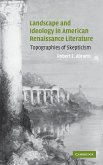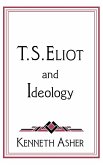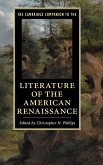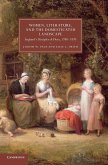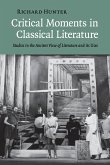Abrams argues that in mid-nineteenth-century American writing, new concepts of space and landscape emerge.
In this provocative and original study, Robert E. Abrams argues that in mid-nineteenth-century American writing, new concepts of space and landscape emerge. Abrams explores the underlying frailty of a sense of place in American literature of this period. Sense of place, Abrams proposes, is culturally constructed. It is perceived through the lens of maps, ideas of nature, styles of painting, and other cultural frameworks that can contradict one another or change dramatically over time. Abrams contends that mid-century American writers ranging from Henry D. Thoreau to Margaret Fuller are especially sensitive to instability of sense of place across the span of American history, and that they are ultimately haunted by an underlying placelessness. Many books have explored the variety of aesthetic conventions and ideas that have influenced the American imagination of landscape, but this study introduces the idea of placeless into the discussion, and suggests that it has far-reaching consequences.
Table of contents:
Illustrations; Acknowledgements; Introduction; Part I. Hawthorne, Thoreau and Melville and the Diffusion of Estrangement: 1. Critiquing colonial American geography: Hawthorne's landscape of bewilderment; 2. Thoreau and the interminable journey of vision 'nearer and nearer here'; 3. Herman Melville's home cosmography: voyaging into the inscrutable interior of the American republic; Part II. Historicizing the American Vanishing Point: Indian Removal, Slavery and Class: 4. The cultural politics of American literary ambiguity; 5. Margaret Fuller's Summer on the Lakes and 'Chief Seattle's Speech': the obliquities of the geographic in-between; 6. The power of negative space in Douglass's autobiographies and in Davis's 'Life in Iron Mills'; Conclusion.
Hinweis: Dieser Artikel kann nur an eine deutsche Lieferadresse ausgeliefert werden.
In this provocative and original study, Robert E. Abrams argues that in mid-nineteenth-century American writing, new concepts of space and landscape emerge. Abrams explores the underlying frailty of a sense of place in American literature of this period. Sense of place, Abrams proposes, is culturally constructed. It is perceived through the lens of maps, ideas of nature, styles of painting, and other cultural frameworks that can contradict one another or change dramatically over time. Abrams contends that mid-century American writers ranging from Henry D. Thoreau to Margaret Fuller are especially sensitive to instability of sense of place across the span of American history, and that they are ultimately haunted by an underlying placelessness. Many books have explored the variety of aesthetic conventions and ideas that have influenced the American imagination of landscape, but this study introduces the idea of placeless into the discussion, and suggests that it has far-reaching consequences.
Table of contents:
Illustrations; Acknowledgements; Introduction; Part I. Hawthorne, Thoreau and Melville and the Diffusion of Estrangement: 1. Critiquing colonial American geography: Hawthorne's landscape of bewilderment; 2. Thoreau and the interminable journey of vision 'nearer and nearer here'; 3. Herman Melville's home cosmography: voyaging into the inscrutable interior of the American republic; Part II. Historicizing the American Vanishing Point: Indian Removal, Slavery and Class: 4. The cultural politics of American literary ambiguity; 5. Margaret Fuller's Summer on the Lakes and 'Chief Seattle's Speech': the obliquities of the geographic in-between; 6. The power of negative space in Douglass's autobiographies and in Davis's 'Life in Iron Mills'; Conclusion.
Hinweis: Dieser Artikel kann nur an eine deutsche Lieferadresse ausgeliefert werden.


